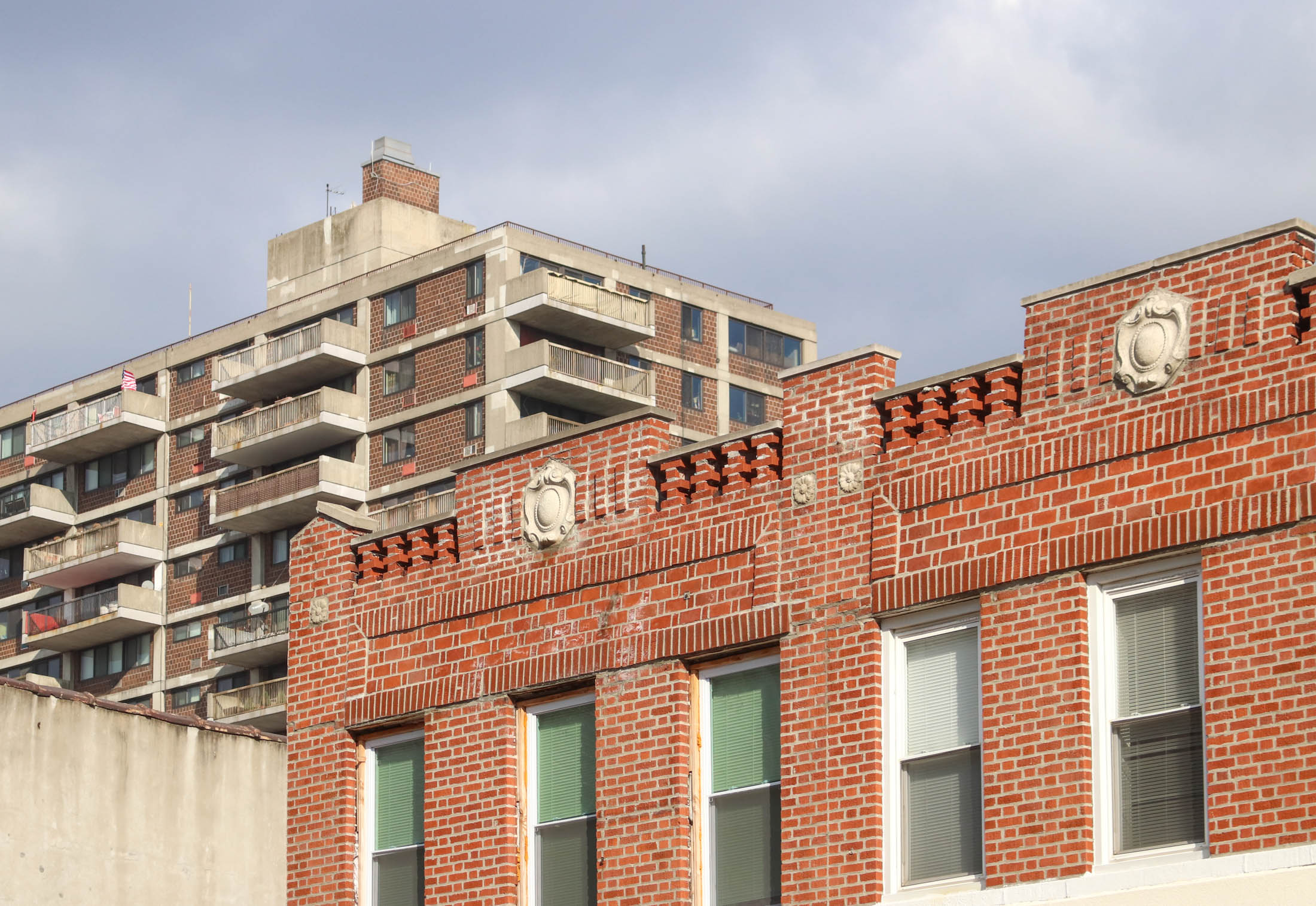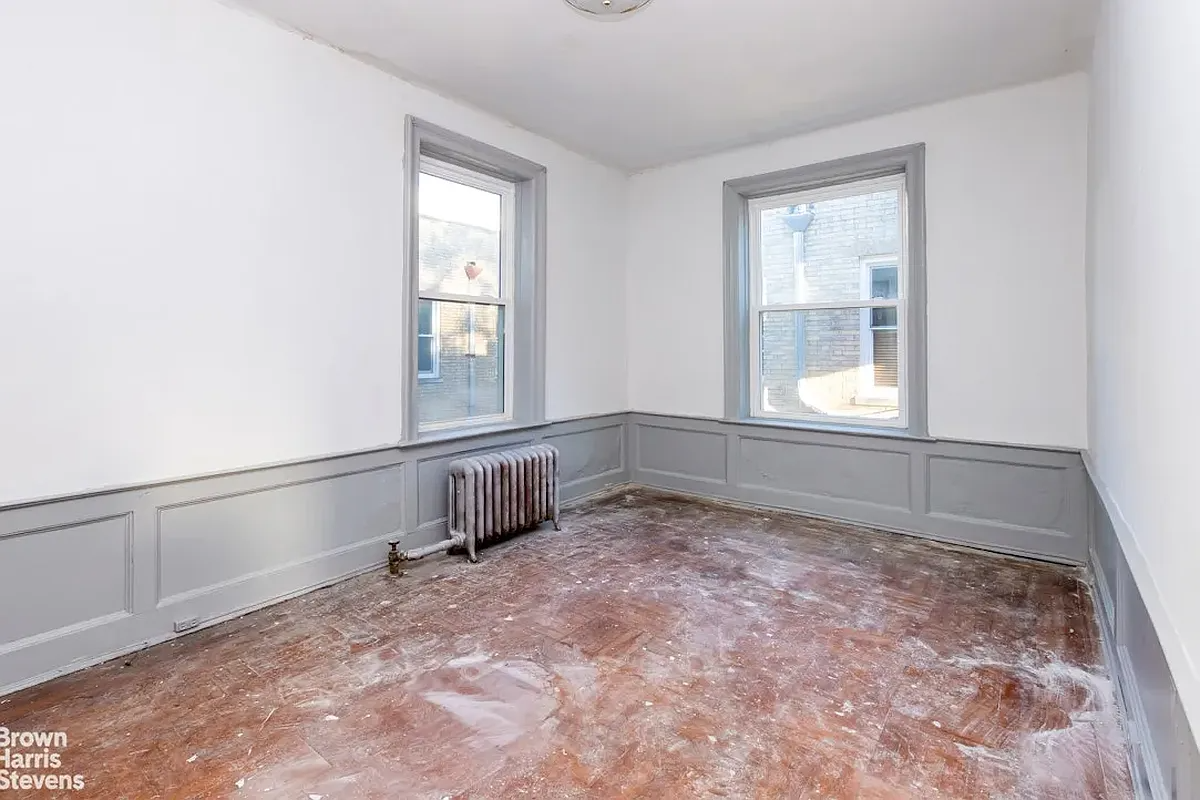Corcoran '07 Market Report: Brooklyn's Still Up
The Corcoran Group released its year-end market data today, and the brokerage’s stats show the ’07 Brooklyn market making healthy (if not huge) gains over 2006. The median sales price on all condos and co-ops was up 7 percent last year, to $590,000, while median townhouse values rose 2 percent in ’07, to $1.2 million….

 The Corcoran Group released its year-end market data today, and the brokerage’s stats show the ’07 Brooklyn market making healthy (if not huge) gains over 2006. The median sales price on all condos and co-ops was up 7 percent last year, to $590,000, while median townhouse values rose 2 percent in ’07, to $1.2 million. The really fun part of the report, however, is its breakdown of how various neighborhoods have fared, sales- and price-wise (see chart on jump). The big winner? Brooklyn Heights, where the median price shot up 19 percent, to $1.3 million. Cobble Hill/Carroll Gardens, on the other hand, showed a median price decrease of 9 percent, going from $950,000 in 2006 to $860,000 in 2007. And Park Slope’s median price slipped from $999,000 in ’06 to $928,000 in ’07. We have a few reservations about this report, including that it doesn’t specify the total number of sales it tracks, that it only compares year-over-year values, and that it basically only covers the priciest brownstone neighborhoods—though we have to give it up for the big C for devoting so much ink to Brooklyn sales data. The article in the Times this morning about the record-setting fourth-quarter Manhattan market notes that Brooklyn’s gains were more “stable” than Manhattan’s. Brooklyn showed its maturity this year because the appreciation was much more steady, said Corcoran Group president Pamela Liebman. Anyhow, do these numbers jibe with pricing trends you’ve noticed over the past year?
The Corcoran Group released its year-end market data today, and the brokerage’s stats show the ’07 Brooklyn market making healthy (if not huge) gains over 2006. The median sales price on all condos and co-ops was up 7 percent last year, to $590,000, while median townhouse values rose 2 percent in ’07, to $1.2 million. The really fun part of the report, however, is its breakdown of how various neighborhoods have fared, sales- and price-wise (see chart on jump). The big winner? Brooklyn Heights, where the median price shot up 19 percent, to $1.3 million. Cobble Hill/Carroll Gardens, on the other hand, showed a median price decrease of 9 percent, going from $950,000 in 2006 to $860,000 in 2007. And Park Slope’s median price slipped from $999,000 in ’06 to $928,000 in ’07. We have a few reservations about this report, including that it doesn’t specify the total number of sales it tracks, that it only compares year-over-year values, and that it basically only covers the priciest brownstone neighborhoods—though we have to give it up for the big C for devoting so much ink to Brooklyn sales data. The article in the Times this morning about the record-setting fourth-quarter Manhattan market notes that Brooklyn’s gains were more “stable” than Manhattan’s. Brooklyn showed its maturity this year because the appreciation was much more steady, said Corcoran Group president Pamela Liebman. Anyhow, do these numbers jibe with pricing trends you’ve noticed over the past year?
Apartment Prices in Manhattan Defy National Real Estate Slide [NY Times]
Photo by threecee.






I’m so bored with all these statistics, theories, numbers, etc.
Yes, we know, invest in real estate for the long term.
But All I know is….middle class New Yorkers, can’t afford to live in these middle class brooklyn neighborhoods, cause the prices are too high, and keep getting higher.
4:16 – Yes, I know that the yield on the bond is used to compute the price of the bond.
I was relating that concept to an investment in a property because the same calculation can be used.
In the bond’s example, the desired yield changes depending on current yields. So, if a bond has a coupon rate of 10% but today’s rates are at 5%, then the bond’s price is at twice value not taking into account maturity.
In the CAP Rate example with Real Estate, if the neighborhood gentrifies (such as in Clinton Hill, Prospect Heights, etc.) and the average CAP Rate of the neighborhood changes from 10% to 5% on average, then you can mark to Market the Price of the Investment Property at twice the original value as bought.
Does that make better sense?
Investor Lou
Lou – even if you assume that the tenant pays all utilities and that you can get $3000 a mo for a 1M apartment, you ignore many, many costs
Closing costs (2x)
Brokerage costs on sale
Real Estate Taxes on Property
Taxes on Capital Gains
Common Charges
repair costs on property – over 10yrs there will be some.
No lost rent considered (10yrs w/o a single month of vacancy or non-payment???)
Insurance
most of the statistics provided by 4:13 are WAY OFF.
4:13 I don’t understand your last bulleted statistic. So you are saying that the home my parents bought in 1965 for $10,000 should have roughly only grown to $17,900 over this period of time and it was only the last few years that caused this phenomena to turn that 10K into 1.5M. I recall it being worth much more than $17,900 long before the last couple of years. Granted it was only 400K in the 80’s, maybe 700K in the 90’s, and the last couple of years have doubled that, but in 1965 a 3 story brick in park slope cost 10K. Those lovely brownstones weren’t much more. Please explain your math? It doesn’t seem to add up.
Okay, it is NYC. In 1974 they bought a house in Podunk, Nowhere for vacations. Cost 12K. Plus 3 acres. Sold in the 90’s, 75K. At your rate return, it should have sold for less than 20K.
Investor Lou
While you may have worked at multiple banks, its clear that you did not trade bonds or buy commercial real estate. For an investor in a fixed rate bond, neither your income nor yield can ever change (assuming bond does not default and you hold to maturity). The yield is used to compute the price of the bond. You buy the bond at a yield which remains constant. You will have mark to market gains or losses, but depending on the type of investor, that may or may not matter. You are correct in noting that on a sale the new investor may have a different yield on the same bond, but all that means is that the new investor is discounting the exact same cash flows at a different discount rate. A cap rate is not used to compute the price you should pay for a property. The cap rate is calculated, as you point out, by dividing the NOI by the price. The fundamental difference is that the cap rate is an output of the calculation, not the factor that determines price. In other words, the cap rate depends on what the price paid is and projected NOI. The price of a bond is determined by the yield. Yield is used to price an asset. Cap rate is used to compare relative value.
I think the most interesting thing about the statistics I posted are these two lines:
* Amount $1 invested in stocks in 1963 would have compounded to today: $12.36
* Amount $1 invested in real estate in 1963 would have compounded to today: $1.79
Considering your own home an “investment” is a concept that is fairly new. Statistically, housing prices over time rise only as much as inflation, otherwise no one would be able to afford them. There are local-short term exceptions to this-anyone living in New York City over the last few years has experienced this- but as pure investments go over the long term you are better off elsewhere.
For the record, I am not talking about investment properties where the rent roll is paying the expenses plus. These opportunities however require that you have found a great deal or found tennants who overpay for a variety of reasons.
One last statistic.
50% of bankruptcies in the US are the result of uninsured medical costs.
3:26 – I’m not here to teach Investing Strategy.
But basically, with leverage, all you need to do is allow the market to bring the value of the asset higher, providing that you did your due dilligence correctly and are investing in the long term good economic environment (which I attribute to many neighborhoods in NYC).
So, for instance, if you invested $100k for a $1 Million condo where it will AVERAGE (note I said average so it may stagnate in the next 2 or 3 years and then go back to a normal 5% to 10% apprecation rate over the duration of 10 years) rate of appreciation is 5% will cause the value of the asset to increase to $1.55 Million.
If you used a $900k (90% financed) 10 year Interest Only mortgage, you rented it out for only $3,000 per month (which means you suffered a negative cashflow of minus $3,000 per month), your sales proceeds looks like the following:
1) Sale Price: $1.55 Million
2) Balance on Mortgage: $900k
3) 10 year Interest Payment on Mortgage: $720k
4) 10 Year collected rent: $360k
Sales Proceeds:
$1.55 Million minus $900k minus $720k plus $360k = $291k.
So, in 10 years you turned $100k into $291k.
That’s a ROI of 291% over 10 years for an Average of 29.1% yearly ROI Average.
That also translates into a 13% compounded Internal Rate of Return (IRR).
So in reality, you cannot compare a 5% Apprecation rate of Real Estate to a 6% Money Market Fund without using the normal way of buying Real Estate as an investment using leverage.
What you needed to compare is the 13% IRR on the piece of real estate investment to your 6% Money Market.
In fact, I make much more than that in reality in the past 10 years I have been investing. But again, I’m not here to instruct.
Note also I didn’t take into account increasing rent rolls or tax write offs but I didn’t take into account that you had to put in work in order to make this transaction work.
ANYWAY.. enough… I’ll leave it up to the Business Math ppl here to confirm my calculations.
Investor Lou
3:10 – I DO ignore the relationship between income and value. What I DON’T ignore is the relationship between FUTURE INCOME AND FUTURE VALUE.
Who cares what the current income and current value is today? All I care about is the future income and value or the combination of the both so that the totality of both will cause my investment to increase.
Regarding foreign investors, I don’t count on them all the time. But the conditions that the Government (high deficit) and the Feds (lower Fed Funds Rate) has create a very weak dollar which causes Foreign Investors to buy NYC (as opposed to a different city that is not considered international) real estate.
If the Dollar became suddenly stronger over time, then I will discount the Foreign Investor.
The current layoff and bonus pools are for 2008. That I have to pay attention to. But it was certainly obvious from the 1st half of 2007 that bonuses were going to still be good. But so many ppl did not take that into consideration.
ANYWAY…. I don’t instruct on this blog.
You were not condescending unlike some on this board and that I appreciate.
We’ll talk more, I’m sure.
Investor Lou